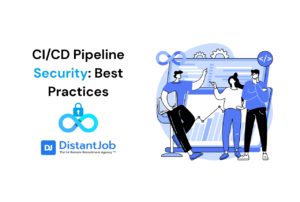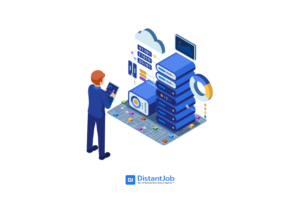Vibe Coding is Silicon Valley’s newest hype. You just vibe, and let an AI chatbot model develop many lines of code for you. Vibe coding is an AI-assisted way to build software where developers describe what they want in natural language and have an LLM create most of the code, prompting their way through it like a pair programmer. It’s a huge accelerator for prototypes and boilerplate code, but without the right guidelines, tests, and release gates, it can introduce security vulnerabilities, huge tech debt, and fragile systems.
AIs produce more than 25% of Google’s code, while Microsoft CEO Satya Nadella says that AIs produce more than 30% of Microsoft’s code. Mark Zuckerberg wants an AI engineer to replace his mid-level developers. Considering the massive IT layoffs, the Big Techs might eventually replace all their workforce with AI.
However, what is the cost of vibe coding? Is it good, and should it be adopted? Is it bad, and will we pay the price in the long run?
What is Vibe Coding?
Vibe coding refers to a development methodology introduced by Andrej Karpathy that means coding by intent: you state what you want, the AI proposes code, and you steer by editing prompts and accepting patches. In February 2025, he described vibe coding as “fully give in to the vibes, embrace exponentials, and forget that the code even exists”.
It makes coding less about writing a manually programmed code and more about talking with an AI buddy. For example, you could ask Cursor to create a Flappy Bird clone, and then ask for adjustments (“gravity is too heavy, the game is going too fast”).
The idea is you have to treat AI as a copilot, not an autopilot.
Why teams are trying vibe coding (Benefits)
Vibe coding’s efficiency is not definitively proven in all contexts, but it has demonstrated speed and productivity advantages, particularly in rapid prototyping and for certain tasks. While speed and productivity are key benefits, concerns remain about the quality and maintainability of code generated through this method. Here are all the pros and cons that vibe coding entails.
1. Possible Increased Speed and Efficiency
Vibe coding leverages AI to automate many repetitive tasks, freeing up developers to focus on what really matters. It might significantly accelerate development, allowing teams to build and deploy applications in hours or days instead of weeks or months. This speed can be particularly valuable for prototyping, MVPs (Minimum Viable Products), and rapid iteration.
2. Lowered Barrier to Entry
Vibe coding makes programming more accessible to individuals without extensive coding backgrounds. It allows non-technical individuals, like product designers or entrepreneurs, to build and experiment with applications. This can democratize coding, allowing more people to contribute to innovation.
3. Enhanced Creativity and Innovation
Vibe coding encourages experimentation and allows developers to explore new concepts and ideas more freely. The ability to quickly prototype allows for more experimentation and more creative thinking.
4. Improved Productivity
Vibe Coding can significantly improve overall productivity by automating routine tasks and streamlining the development process. Developers can spend more time on strategic thinking, design, and user experience, leading to better products.
5. Cost-Effectiveness
Vibe coding can reduce development costs by accelerating the production and potentially reducing the need for large development teams. It can also potentially offset the cost of buying off-the-shelf software.
Where vibe coding goes wrong (the downside)
1. Limited Time Savings
At least, that’s in theory! In truth, vibe coding might be a bottleneck rather than a deadline saver, it is not used properly.
A 2025 study from the University of Chicago reveals that the average time savings was only 2.8%. That would reduce the 40-hour work week journey to less than 39 hours. The Federal Reserve Bank of St. Louis found an average time savings of 5.4% of work hours for generative AI users in a November 2024 survey, translating to a 2.2-hour weekly savings for a 40-hour work week.
These studies are consistent with JetBrains’ 2024 State of Developer Ecosystem Report. In their survey, most users reported free 1-2 hours per week.
A 2025 study from Linkdood Technologies found that while AI creates new tasks that offset much of the time-saving benefit, 8.4% of employees are taking on new functions due to AI deployment.
Vibe Coding makes workers spend hours refining AI prompts, reviewing output, transforming data, etc.. It even requires new police on usage, risk management, and ethical standards.
These new, fresh studies go in the opposite direction of earlier studies that said vibe coding (and AI) would make work more productive.
In short, if not properly managed, AI (not just vibe coding) acts like a bottleneck maker rather than a time-saving tool!
2. Security Breaches
So, vibe coding might be neat to a certain extent. It lowers the barrier to building software, and devs can become more productive. However, vibe coding might produce nasty side effects. AIs are still learning how to code. They write tons of garbage code that leads to sustainability and security issues. If the code is not manually reviewed, it will produce tech debt.
According to the Center for Security and Emerging Technology (CSET), 48% of AI-generated code from five AI models had security vulnerabilities.
According to GitGuardian, GitHub Copilot, an LLM used for vibe coding, might suggest code that leaks your security and private information by accident. In 2024, they scanned a sample of approximately 20,000 repositories with active Copilot, over 1,200 leaked at least one secret, representing 6.4% of the sampled repositories. This incidence rate is 40% higher than others across all public repositories.
Consider Microsoft recently released Copilot as an open-source AI under an MIT License. While they ruined Skype and other acquisitions, most of the open-source moves from Microsoft have gone very well so far. VS Code and TypeScript are wildly popular in the web developer ecosystem. With an open-source approach, Copilot might be more accessible to developers (they only have to pay for the cloud or use their own).
Does that mean bugs might be more prevalent than ever? Yes. Don’t ever doubt it. But it also means Copilot will ship features faster than ever, and when people create custom features, Microsoft can just copy/paste them into Copilot. If Copilot is going to get better, only time will tell.
That being said, in the way it is now, Copilot (and vibe coding in general) might require more debugging than a junior developer’s code, so your best bet, at least for 2025, is to wait and see if it gets better.
Vibe coding vs alternatives
| Approach | Speed to first draft | Maintenance & clarity | Typical risk |
|---|---|---|---|
| Vibe coding | Fastest | Variable without standards | High if ungated |
| AI-assisted (disciplined) | Fast | Predictable with patterns, reviews, tests | Medium |
| Traditional | Slowest | Most predictable | Lower |
How Vibe Coding Works in Practice
Vibe Coding can be straightforward and useful for large tasks. Here is a 5-step workflow to vibe code:
1. Write a proper prompt
Describe the feature in plain English. You can use some prompt engineering to help you with that description. Think P.R.O.M.P.T.:
- Persona:
- Give your LLM a role-playing character. It helps the LLM go in the proper direction. Example: “You are a senior developer on Stack Overflow, specialized in the front-end”.
- Road map:
- Describe what you want to be done. Example: “I want to center the div”.
- Objective:
- Describe your goal. Example: “I need to strike a balance between organized layouts, improving readability, and user experience.”
- Model:
- Describe how you want it to be done. Give it a criterion of success and a sample of your existing code (if any). Example: “I need it to be done in JavaScript, and it needs to be functional, not crash the page. Here’s the code so far, so you will know what to do and where.”.
- Panorama:
- Tell your LLM the purpose of the task. Example: “Our company sells high-quality food, and it needs to reform the main page to scale up sales.”
- Transform:
- That comes after the code is generated, and on prompt fixes.
If possible, give examples of what you want to accomplish. Not giving examples of proper coding is called Zero Shot, and it might reduce your chances of getting a proper code from AI.
Markdown is a great way to make the code more readable for the LLM.
2. Let the LLM generate starter code
You might want to use more than a single LLM to generate the same code. Ask Claude, ChatGPT, and Gemini to do the same task and compare results. You can also offer them results from each other. This is called RAG (Retrieval Augment Generation).
It’s like having a multi-agent AI.
3. Run & Test
When you are satisfied with the results, it’s time to test it. Don’t forget to have a sample of the former code before tests.
4. Prompt fixes
If you wish your LLM to do its tasks again without bugs, review your previous prompt and address your bugs, troubleshooting, and current issues, so the LLM will take notice of it. Rinse and repeat from step 1.
You also might prefer to fix the code manually, it’s up to you.
5. Refactor & Commit
When you are satisfied with the snippet of code after tests, refactor and commit.
How Does Vibe Code Shape Roles and Responsibilities in the Age of LLMs
Vibe coding is reshaping IT specialists, not eliminating them. With AI assistance, developers are moving from code programmers to code editors. Now they write prompts rather than code, they review AI code to avoid bugs and security breaches.
According to Anthropic, programmers are the professionals who use Claude AI the most. 37.2% of all queries were about software modification, code debugging, and network troubleshooting. It’s safe to assume that programmers often go vibe coding. Nothing wrong with that, as long as the code is delivered safely.
Changes in the Career Ladder
The engineering career ladder is still intact, even if bending. Junior developers can delegate a lot of entry-level coding tasks to AI assistants, such as creating boilerplate code or simple functions.
With AI guiding them, new hires must advance to handle higher-level work sooner rather than having their junior roles eliminated.
When AI takes over more basic coding, some industry watchers are concerned about what junior engineers will do. They ask, “What will junior engineers do if some basic tasks become AI-driven?”
Junior engineers might spend more time on code review, testing, and prompt writing than coding from scratch.
However, AI might kill their problem-solving skills. Many juniors are growing frustrated due to their newfound inability to code. The vibe is not good for their skill development. Remember, no junior developers means no seniors in the future.
That being said, AI might be great for tech leads and senior engineers. The ability of AI to produce large amounts of code rapidly actually increases the need for experienced developers. They already see the whole system architecture and design, and know what code can enter and what code needs a fix.
LLMs are enhancing senior developers rather than replacing them or crippling them (as AI misuse might do with juniors). Engineers who value creativity and critical thinking will continue to be valuable. But those who are only able to produce repetitive code will lose their jobs.
The Rise of Product Engineer
Software teams are also evolving with new roles. The difference between front-end and back-end is disappearing. With vibe coding, it is even more feasible for one person to work across the stack or cross-discipline. Don`t take me wrong, product engineers already existed before AI. However, more than ever, companies need them. Product engineers are professionals who are more focused on the product rather than concerned with the front-end or back-end distractions.
As Vercel’s VP of Product, Lee Robinson, describes it: “A product engineer … think[s] about everything that it takes to ship a feature and deliver customer value end to end.”
In practice, an engineer can use AI to fill knowledge gaps outside their specialty. For example, a product engineer can have the AI generate a rough UI. Then, they ask for help from front-end colleagues to review the result. The result is cross-functional developers with less specialized roles.
| Team Aspect | Traditional Approach | AI-Assisted (Vibe Coding) Approach |
| Developer’s Role | Developers hand-code features line-by-line, focusing on implementation details and syntax. Junior devs often handle repetitive coding tasks. | Developers craft C high-level solutions via prompts, delegating implementation to AI. They focus on reviewing and refining AI-generated code, system design, and integration. Junior developers take on more review/testing duties as trivial coding is automated. |
| Specialization | Clear specialization: e.g. separate front-end vs. back-end devs, distinct roles for designers, testers, etc. While we can’t generalize, specialization is more distinct than with Vibe Coding. | Blurred roles and full-stack “product engineers” emerge and handle features end-to-end, with AI filling skill gaps. Non-engineers (designers, PMs) also directly create software components with AI assistance. |
| Workflow & Process | Iterative development with many manual steps: human-written user stories -> human-coded features -> manual testing -> debugging -> documentation. Handoffs occur between roles (e.g. Dev to QA, Dev to Ops). | AI writes code and humans review it. Many routine steps (code scaffolding, test generation, documentation) are automated, compressing development cycles. |
| Quality Assurance | Dedicated QA engineers write test plans and manually test features; developers fix bugs. Testing relies on human effort for coverage. | LLMs can auto-generate extensive test cases and even detect patterns that might cause bugs. However, hallucinations can potentially make the AI miss bugs or treat good code as buggy. |
Vibe Coding Best Practices
As you noticed, vibe coding is not magic, and it can be problematic when done wrong. Developers must keep two things in mind while “vibe coding’: security best practices and system architecture. AI often messes up with both.
Here is the way to properly let AI be a tool, not a disaster.
1. Prompt Engineering
Answer these four questions before preparing a prompt:
- What is this application all about? (Requirements)
- How should it be handled? (User Stories, API, Data Processing, Programming Language, etc.)
- How would you adjust the application logic into programming? (Key features, Milestones, etc.)
- How would you master this application? (more User Stories, now adapted for UX)
A clear vision of how the application should work helps the AI build better.
2. Frameworks
Know your frameworks. If you know the exact framework for your application, tell your LLM. It will be easier than just building it from scratch. Examples include React, Angular, Vue, Django, Laravel, and Tailwind CSS.
If you don’t know the best framework for your app, you might ask your AI to get one first; chances are, if the LLM suggests a framework, it might be familiarized with it rather than hallucinating.
However, you should know your framework and how it works before starting to prompt. While you don’t need to master it, you should at least have a solid grasp on its fundamentals.
3. Checkpoints and Version Control
With AI, bugs aren’t an eventuality, they’re a given. Debugging will take most of your time. If you prefer debugging to coding, lucky you then! Vibe coding is your time to shine.
Some No-Code AI-driven platforms may have an integrated version control. However, Git and GitHub are still your best bet if your repository isn’t public. You really don’t want your AI-written code available to hackers.
4. Debugging
Debugging is the bread and butter of quality vibe coding! You can debug the code snippet yourself (highly recommended) or ask the AI to do it for you, and accept all the instant karma this solution implies.
Sometimes, the AI can debug itself and make the changes you ask. Asking it demands a deep understanding of the code, framework, language, and the nature of the bug at play. Give your LLM as much context as possible.
You might train an LLM with a large, extensive pile of code, documentation, test cases, user stories, and supporting materials. It will reduce mistakes gradually.
Preferentially, debug it yourself manually and use an LLM when you need to save time.
Will AI replace Developers?
AI won’t replace developers, but it will change their workflow forever. AI produces many lines of code, but better code is actually made with less, not more. Less code is easier to understand and maintain over time. It is also easier to debug, easier to perform in any given environment, and provides a better user experience.
LLMs produce automatic code with tons of bugs, and we do not know how much tech debt we have accumulated since.
It’s sad to say that many big companies do not understand the value of their human capital. A certain MBA, without experience in Tech, decided to investigate the productivity of IT specialists. His chosen metric was how much programmers code per month. He believes that 50% of Google’s IT Staff are slacking off. That sort of mentality led a software company to fire all its developers and use just AI instead. It backfired.
Instead, train your developers on AI’s best practices. Vibe coding is one more tool in the arsenal, and if used correctly, it will improve your team’s productivity, but it won’t replace it.
And if you need a senior AI developer who knows everything about AI proper usage, contact us. We will find the very best, like no one ever was, in just two weeks! A cultural fit proper for your business and needs!
Frequently Asked Questions (FAQ)
AI-assisted coding with a developer supervising it.
Yes.
Cursor, Copilot, Windsurf.
If you are willing to review every snippet of code generated, yes. Otherwise, no.
Write a proper prompt to an LLM, review the code, and test it.





